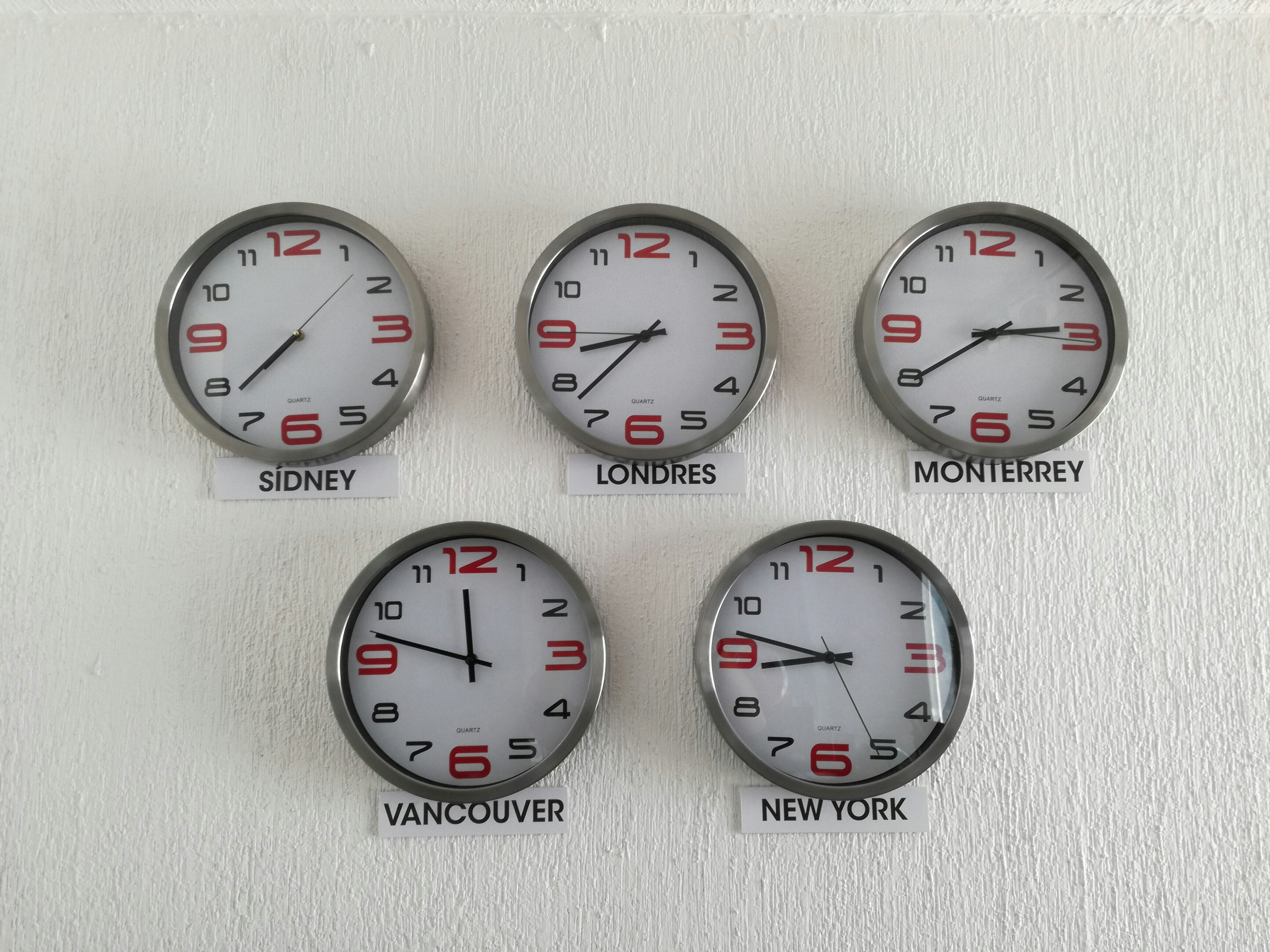How automation will change the way we live and work

Mayuri Ghosh
Head of Consumers Beyond Waste, Strategy & Public Private Partnerships, Future of Consumption Platform, World Economic ForumThe past five years have seen major disruptions in business models. These disruptions of the past are now megatrends for the future and many of them are being driven by emerging technologies and digitization.
As the figure below shows, these megatrends and transformations will create new opportunities for businesses, the services and goods they produce, and their organizational models.
Source: The Networked Readiness Index Historical Dataset © 2012-2015 World Economic Forum
As customers move from purchasing products to consuming services and experiences, businesses have no choice but to fundamentally rethink their operational models. Automation of supply chains will be one way of achieving this. Here are four ways we foresee this playing out over the next five years:
- Robots will join the manufacturing sector en masse
In manufacturing, robotics and artificial intelligence (AI) will be the most adopted technologies over the next five years. In fact, we can already see it happening. For example, rather than subcontract manufacturing to Asia, Zara built 14 highly automated factories in Spain, where robots work around the clock cutting and dyeing fabrics, allowing the company to adopt a just in time inventory approach.
Consumer markets experiencing high growth will particularly need to expand production capacities. Since 2013, China has been the world’s biggest market for robotic machinery. Greater use of robotics and AI could create new hope for countries like China that are losing cost competitiveness due to rapidly rising factory wages and the growing challenge of finding manufacturing workers.
- Big data and analytics will be used across supply chains
The cost of sensors and microprocessors – components that make manufacturing “smart” – will keep going down, driving the broader application of manufacturing automation. For businesses that in the past could not justify the cost of conventional systems, cloud computing and Software as a Service – where software is centrally hosted and made available on a subscription basis – will make the big data management and analytics more accessible.
IBM’s Watson Analytics is an example of predictive analytics and data visualization being used by companies to help them make more informed business decisions. When big data and analytics are used along with the sensor, robotics and AI technologies already mentioned, both the production process and the end product will be “smarter”.
- Last-mile delivery will be Uberized
On the distribution side, companies will be – and are already – working on solving the last mile problem. Instacart, for example, allows people to order from their local grocery stores online, and then sends a “personal shopper” to pick up your items and deliver them to you. Other established companies are piloting solutions like Uber Rush to meet customers’ real-time needs. And they are consistently working on improving the quality of service and broadening the geographic coverage. In the next five years, there will likely be many similar business models in the market to fit different people’s needs.
- The end of the high street?
If consumers are not already shopping online, they definitely will be over the next five years. We will see the blurring of the physical and digital space, as well-established bricks-and-mortar retailers build new networks to achieve as much scale over the internet. In the meantime, in an attempt to deliver goods to customers as fast as possible, companies like Amazon will build even more regional delivery centres. One Chinese online retailer, JD.com, has already been investing heavily in building its own delivery network. It currently operates 82 warehouses with a total area of over 1.3 million square metres in 34 cities, as well as 1,453 local delivery stations in 460 cities across China.
But it’s not just businesses that will feel the impact. Over the next five years, the transformation of the supply chain will also affect people in two very significant ways:
- The rise of the entrepreneur
Over the past two decades, the growth of companies like eBay has created a new type of micro-entrepreneur. The latest technological advancements will create even more new ways for people to earn a living. One great example is Etsy, an online marketplace for arts and crafts, which allows hobbyists to sell their wares around the world. Another example is Uber, which is helping tens of thousands of drivers to work as and when they want. Both of these cases demonstrate that while supply chain automation will change the world of work, it will offer many new models of employment.
- Putting our brain power to use
Even in the technology age, business is a lot about meeting people face to face, having conversations and building relationships. While the regular transactional side of business can be automated and digitized, a lot of new business development is about having real conversations and offline engagement. Knowledge-driven jobs, involving knowledge of both business services and new technologies, will be on the increase compared to the levels they’re at today.
Source: The Networked Readiness Index Historical Dataset © 2012-2015 World Economic Forum
Whether business models evolve incrementally or in a transformational manner over the next five years, in almost all cases the changes will lead to smarter supply chains, smarter products and high-quality services for consumers. While this will add value and improve business performance, society should not be left behind. Human capital will continue to be a crucial driver of economic growth. Businesses must explore ways to develop the skills of their current and future employees to build a workforce capable of underpinning a modern, competitive business and economy.
Have you read?
What impact will artificial intelligence have on our jobs?
What can nanotech do for entrepreneurs and job creation?
Does technology spell the end of work as we know it?
Authors: Mayuri Ghosh, Associate Director, Consumer Industries, World Economic Forum; Shichuan Li, World Economic Forum
The World Economic Forum’s Global Agenda Council on the Future of Consumer Industries is developing guidelines to ensure the consumer industry can make the most of the opportunities offered by the new business models discussed in this article.
Image: A humanoid robot works side by side with employees in the assembly line at a factory of Glory Ltd., a manufacturer of automatic change dispensers, in Kazo, north of Tokyo, Japan, July 1, 2015. REUTERS/Issei Kato
Don't miss any update on this topic
Create a free account and access your personalized content collection with our latest publications and analyses.
License and Republishing
World Economic Forum articles may be republished in accordance with the Creative Commons Attribution-NonCommercial-NoDerivatives 4.0 International Public License, and in accordance with our Terms of Use.
The views expressed in this article are those of the author alone and not the World Economic Forum.
Stay up to date:
The Digital Economy
Related topics:
Forum Stories newsletter
Bringing you weekly curated insights and analysis on the global issues that matter.
More on Economic GrowthSee all
Rishika Daryanani, Daniel Waring and Tarini Fernando
November 14, 2025









